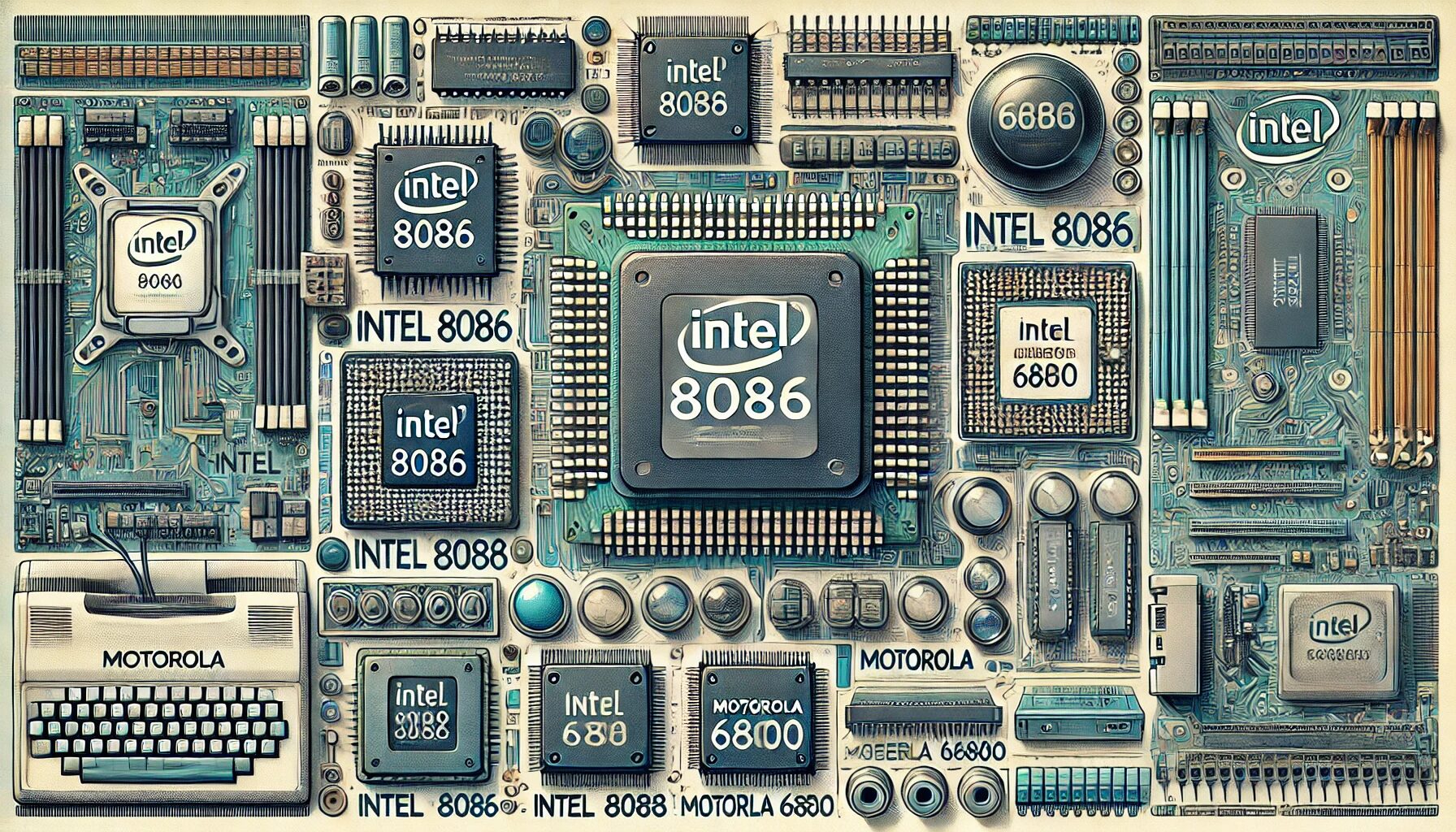The history of computing is marked by several pivotal moments, many of which are tied to the development and deployment of groundbreaking microprocessors. Among these, the Intel 8086, Intel 8088, and Motorola 68000 stand out for their significant impact on the industry. These processors not only advanced technological capabilities but also enjoyed extended production runs due to their versatility, robust performance, and widespread adoption.
Intel 8086: The Foundation of Modern Computing
History and Development
Introduced by Intel in 1978, the Intel 8086 was the first 16-bit microprocessor. It was designed by a team led by Stephen P. Morse and is credited with starting the x86 architecture, which remains the standard for personal computers to this day. The 8086 was notable for its advanced features at the time, including a 16-bit external bus, which allowed for faster data processing compared to its predecessors.
Initial Implementations and Applications
The 8086 found its first major implementation in IBM’s Personal Computer (PC), which was launched in 1981. This decision by IBM to use the 8086 (and its variants) significantly boosted its popularity and cemented its place in computing history. The processor was used in a wide array of applications beyond PCs, including embedded systems, industrial controllers, and military applications, thanks to its robust performance and flexibility.
Longevity and Production Run
The Intel 8086 enjoyed a long production run until it was officially discontinued in September 2007. Its longevity can be attributed to several factors:
- Backward Compatibility: The 8086 set the foundation for the x86 architecture, which emphasized backward compatibility with software written for earlier Intel processors. This ensured a seamless transition for users and developers, maintaining its relevance over decades.
- Versatility: Its use in various applications beyond personal computers, including industrial and embedded systems, prolonged its demand.
- Robust Performance: The 8086 offered significant improvements in speed and capability over its predecessors, making it a reliable choice for a variety of computing needs.
Intel 8088: Bringing Computing to the Masses
History and Development
Following the success of the 8086, Intel introduced the 8088 in 1979. The 8088 was essentially a variant of the 8086 with an 8-bit external data bus instead of a 16-bit bus. This design choice was made to reduce costs by enabling the use of cheaper and more readily available 8-bit support chips.
Initial Implementations and Applications
The Intel 8088’s most famous implementation was in the original IBM PC, which debuted in 1981. The decision to use the 8088 helped keep the cost of the IBM PC down, making personal computing more accessible to a broader audience. This accessibility played a crucial role in the proliferation of personal computers in homes and businesses during the 1980s.
Longevity and Production Run
The 8088 was produced until May 1998, a testament to its enduring utility. Key reasons for its extended production run include:
- Cost-Effectiveness: The 8-bit bus design made the 8088 a cost-effective solution, appealing to budget-conscious consumers and businesses.
- Wide Adoption: Its inclusion in the IBM PC, which set the standard for personal computing, created a large installed base that required ongoing support.
- Flexibility: Like the 8086, the 8088 was used in a variety of applications beyond personal computers, including embedded systems and industrial applications.
Motorola 68000: A Revolutionary Processor
History and Development
The Motorola 68000, introduced in 1979, was a 16/32-bit microprocessor that featured a 32-bit internal architecture with a 16-bit external bus. It was developed by a team led by Tom Gunter and provided significant advances in computing power and design elegance. The 68000 was part of the Motorola 68k family, which became known for its clean and orthogonal instruction set.
Initial Implementations and Applications
The 68000 was widely adopted in various influential computer systems, including the Apple Lisa and the original Apple Macintosh. Its superior performance and capabilities made it a popular choice for early graphical workstations, personal computers, and gaming consoles, such as the Sega Genesis. Additionally, it was used in embedded systems, telecommunications equipment, and industrial applications.
Longevity and Production Run
The Motorola 68000 remained in production into the early 2000s. Its long production run can be attributed to several factors:
- Advanced Architecture: The 68000’s powerful and efficient architecture made it a favorite for high-performance applications.
- Versatility: Its use in a wide range of systems, from personal computers to gaming consoles and industrial controllers, ensured a broad and sustained demand.
- Support and Ecosystem: The strong support from Motorola and a growing ecosystem of compatible software and peripherals helped maintain its relevance.
Conclusion
The Intel 8086, Intel 8088, and Motorola 68000 processors each played pivotal roles in the evolution of computing. Their innovative designs, coupled with widespread adoption and adaptability, contributed to their long production runs. These processors not only powered the early personal computers and workstations but also laid the groundwork for future advancements in microprocessor technology. Their legacies continue to influence the architecture and design of modern processors, underscoring their importance in the history of computing.


